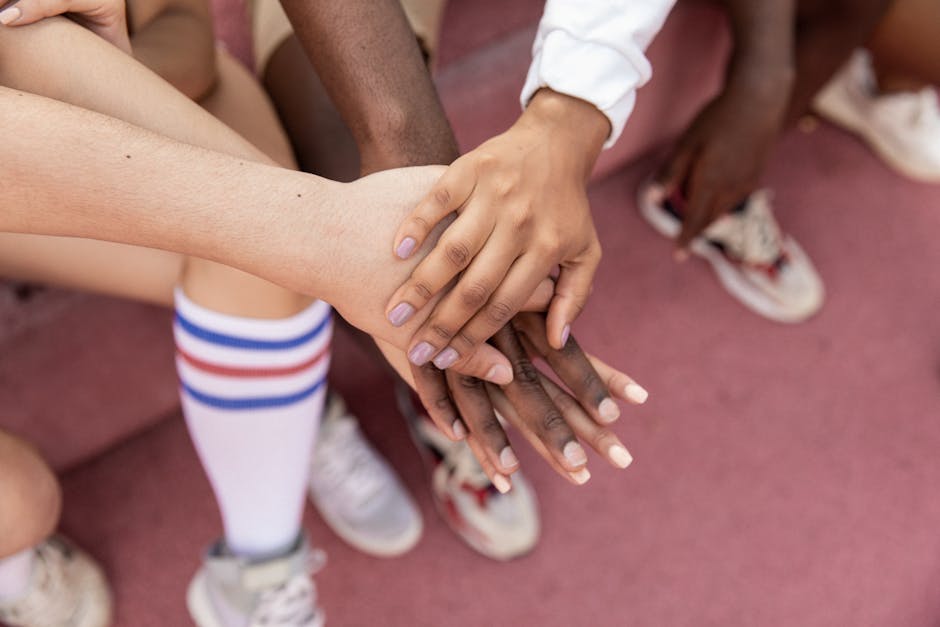Gamification in Sports Training: Transforming Athlete Development
In today's sports landscape, the boundary between play and training is increasingly blurred, thanks to the rise of gamification in sports training. Imagine athletes not just honing their skills through traditional drills but engaging in interactive, game-like scenarios that enhance their responsiveness, decision-making, and teamwork. This fusion of digital play and athletic education is transforming how athletes train, prepare, and ultimately perform. But what does this mean for the future of sports? Let’s dive into how gamification is revolutionizing athlete development.
Understanding Gamification in Sports

Gamification involves incorporating game-like elements into non-game contexts, making activities more engaging and motivating. In sports training, this can mean using apps that track performance metrics, virtual reality (VR) environments for immersive training, or competitive games that enhance physical and mental skills. In a world where engagement can drive performance and motivation, gamification provides athletes with a fresh, exciting way to train.
The Science Behind Gamification

Research demonstrates that gamification increases motivation and engagement, capitalizing on the human brain’s natural inclination toward play. According to a study on gamification in education, participants showed higher engagement levels and retention when tasks had game features such as scoring, competition, and immediate feedback. This principle translates perfectly to sports training, where an athlete's mental state can significantly impact their performance.
For further reading on the science behind gamification’s benefits, you may refer to this Harvard Business Review article, which dives deeper into the psychological aspects of game mechanics applied to real-world tasks.
Enhancing Skill Development Through Game Mechanics

Athlete development has always focused on physical skills, but gamification adds layers of mental prowess. Incorporating elements like point systems, levels, and achievement badges targets various aspects of training—speed, endurance, decision-making, and teamwork. One of the most effective tools is VR training, immersing athletes in scenarios that mimic real-game conditions.
Real-World Applications of Gamified Training

Consider how popular sports like soccer or basketball are adopting gamified training regimens. Apps like "Zombies, Run!" have athletes completing real runs while participating in a zombie apocalypse narrative, offering both an aerobic workout and a motivation to push harder while having fun. These apps are reshaping conventional training approaches by integrating the socio-competitive aspects that often fuel sports performance.
Additionally, using virtual reality, trainers can put athletes into high-pressure situations they might face during actual games. The focus shifts from merely practicing techniques to developing critical thinking and quick decision-making skills under pressure.
The Competitive Edge: Gamification and Team Dynamics

Gamification doesn’t only enhance individual athlete performance; it can significantly impact team dynamics. Through team-based challenges or collaborative training environments, athletes learn to communicate better, strategize and support one another’s growth. Imagine a basketball team completing a drill where they earn points for assists and communication, fostering camaraderie and improving overall team synergy.
Moreover, platforms that allow coaches to set up leaderboard-style competitions among players create an engaging environment. These competitive aspects breed a culture of accountability and encouragement, crucial for thriving team sports.
The Role of Data Tracking in Gamified Training

Data tracking is at the heart of modern sports training and provides insights that can be gamified. Wearable tech and mobile applications collect various performance metrics, translating them into actionable feedback. Athletes can see their real-time statistics through gamified platforms, engaging them further by comparing metrics over time or against their peers.
In this pursuit of performance improvement, they get immediate feedback, making the journey not just about competing with others but also about personal growth. Tracking progress through a gamified lens can transform the mindset of athletes, igniting a passion for continual self-improvement.
The Future of Athlete Development: Combining Traditional Coaching with Gamification

While gamification has made significant strides, it is essential to blend these modern methods with traditional coaching philosophies. Balancing the analytical, data-driven elements of training with the nuances of human judgment is vital. Coaches must understand how to implement gamification without detracting from the fundamental skills and strategies essential in sports.
As outlined in the article regarding cognitive coaching, marrying neuroscience with traditional sports training strategies can enhance athletes' mental and physical capabilities, creating well-rounded competitors.
Technical Challenges and Considerations

Despite its advantages, gamifying sports training is not without challenges. Integrating technology requires substantial investments in devices, software, and training for both athletes and coaches. Furthermore, there is a risk of relying too heavily on technology, potentially overshadowing essential technique and fundamentals.
Equally important is ensuring that gamified platforms remain accessible. As technology evolves, different socioeconomic barriers may limit athletes' access to these innovative training tools. Creating a balance that allows equitable participation is crucial for the future of sports development.
Gamification and Mental Health in Sports

An often-overlooked aspect of athlete training is mental health. The immersive experiences that gamification provides can be a double-edged sword; while they can enhance performance, they might also create additional pressure on athletes. Conversely, gamified training can also serve as a coping mechanism, allowing athletes to engage in environments that are less stressful than traditional training sessions.
The focus on mental resilience should not be ignored, as demonstrated in the article regarding mental health strategies in sports. A balanced approach to gamified training can foster both mental and physical well-being.
The Community Impact of Gamification in Sports Training

The collaborative nature of gamification extends beyond individual athletes and teams, impacting entire sports communities. Programs that integrate local athletes in gamified training methods can cultivate a sense of belonging and connection within neighborhoods.
Grassroots movements can thrive as younger generations find new engagements within sports through gamified experiences, leading to increased participation and investment in athletic programs. Communities can come together, starting dialogues that intertwine sports, personal development, and community wellness.
Inclusivity and Diversity in Gamified Sports Training

As gamification takes center stage in sports training, the importance of inclusivity cannot be overstated. Platforms should be designed to accommodate varying skill levels, ensuring that everyone can participate and develop. This inclusive approach helps dismantle barriers and fosters a more diverse athletic community.
Athletes from various backgrounds bring unique perspectives, enhancing the richness of training experiences while learning from one another. By widening the scope of who can benefit from gamified training, we can create a more equitable athletic landscape.
Networking Beyond Traditional Training
Gamification also presents unprecedented networking opportunities. With a digital sphere where athletes can connect, share their gamifications experiences, and even compete against others globally, the potential for growth expands infinitely. Athletes can build global relationships, enhancing their training experience with diverse influences and strategies.
Connecting athletes through digital platforms creates a collaborative spirit that pushes personal and communal performance further.
Leveraging Esports to Inform Traditional Sports Training
Beyond traditional sports, the rise of esports can offer profound insights into gamification. The tactical game-play seen in esports demonstrates how strategic planning, teamwork, and real-time decision-making are crucial. Traditional sports can incorporate elements gleaned from esports training, such as the use of analytical software for performance evaluation.
For more on the intersection of esports and traditional sports, check out our article on how esports impact traditional sports engagement.
Looking Ahead: The Future of Gamified Sports Training
As we gaze into the future, it’s clear that gamification in sports training is more than just a fleeting trend. It represents a fundamental shift in how athletes view training—transitioning from monotonous drills to interactive learning experiences designed to build skill, resilience, and mental acuity.
Athlete development is on a continuous evolution path, integrating technological advancements and innovative training methods. As gamified experiences continue to uplift the athlete training landscape, the focus on creativity, connection, and enhanced performance will lead to richer and more gratifying sports experiences.
Final Thoughts
Gamification in sports training is not merely about play; it's about nurturing a versatile athlete equipped for the challenges of modern competition. By harnessing technology, fostering inclusivity, and blending traditional coaching methods with experiential learning, we can ensure a brighter, more engaged future for athletes everywhere. As the world of sports continues to evolve, it’s an exciting time for athletes to embrace holistic development through gamified training techniques—transforming how they train and perform.
For those looking to explore how gamification can elevate their training regime or revolutionize their athletic journey, staying informed and connected to evolving trends in sports can help unlock their full potential.



